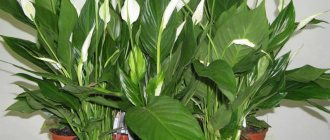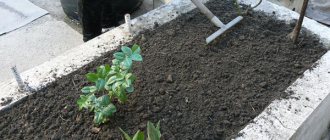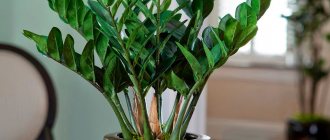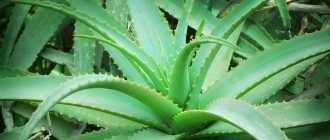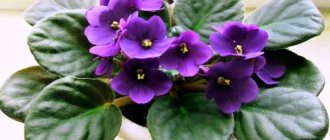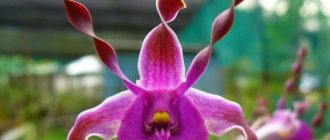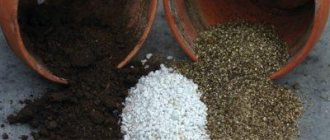Success in growing adenium depends 50% on properly selected soil. Many can argue with this, because with an abundance of light and heat, this plant grows in any substrate. But if conditions are not ideal, then the soil will be important. And in this article we will teach you how to make soil that is suitable specifically for your green pets.
- Criteria for good soil
- Base for soil
- Leavening agents
- Special Additives
- Ready soils
- How to make your own soil
Criteria for good soil
Unfortunately, there is no universal recipe or secret formula for any conditions of detention. But there are important principles that must always be followed.
Ease. The soil for adenium should not cake, it will become compacted. The correct substrate allows water and air to pass through easily and dries quickly. If you decide to replant an adenium, you take it out of the pot, and instead of soil you have a stone or a piece of clay - this soil is clearly unsuitable.
Looseness. A condition that follows from the previous paragraph. So that the earth ball does not cake over time, and the roots are always supplied with a large amount of oxygen, the substrate must be breathable. To do this, various baking powders are added to it. A good indicator is if, with a strong squeeze in your hand, the soil remains loose. And also, water does not stagnate in loose soil, which means the risk of root rot is reduced.
Moisture capacity. A criterion that you need to be very careful with. The amount of moisture-retaining components will largely be determined by your growing conditions. Often, only through experience it is possible to find a balance between the substrate, which has to be watered daily, and the swamp soil.
Nutritional value. Adenium is native to desert, arid regions where soils are poor in nutrients. But modern hybrids most often come from tropical Asian countries. And there breeders do not adhere to strict diets. Increasingly, domestic adenium growers recommend not using empty, inert soils, but adding nutritional components to the substrates.
Acidity. According to the Ph indicator, the soil for adenium should be in the range of 5.5–7, that is, from slightly acidic to neutral. Some adenium growers also use weakly alkaline substrates.
Let's move from the general to the specific and figure out what the soil for adenium may consist of. Conventionally, all components can be divided into a base, leavening agents and special additives (organic and mineral fertilizers of prolonged action).
How to sterilize soil
There are several ways to disinfect the soil before transplanting adenium into it. The simplest is calcination in the oven. The soil (without baking powder) is spread in a thin layer on a baking sheet and placed in the oven (mode: 15 minutes at 200 degrees). Then you need to wait for the soil to cool and transplant the adenium into it.
Calcination in a water bath is another easy-to-implement method. Place a pan of water on the gas and place a baking tray on top with soil distributed over it. The duration of exposure is 60 minutes.
Using a microwave is a modern method. The earth is distributed into “portions”, each placed in baking bags. You need to select the “Warming” mode and set the timer for 4 minutes.
A solution of potassium permanganate is also a simple method. Prepare a light pink liquid, then generously irrigate the entire surface of the soil. You can replace potassium permanganate with special products like Fundazol.
Note! You can choose any method of sterilization, but experienced gardeners advise using several at once.
Base for soil
The components that are taken as a basis are not used independently. They must be diluted with baking powder. As a percentage, the base makes up from 50 to 70% of the entire soil mixture.
Universal soil for indoor plants
There is a lot of controversy and different opinions regarding the use of this component. The majority, however, is inclined to believe that this is not the most suitable option. But there are those who prefer to use only universal soil with a small content of baking powder.
Our shop has not been able to get good results with this primer. In addition, we do not recommend using cheap store-bought mixtures. They mostly consist of high-moor peat, which strongly acidifies the substrate. An acidic environment negatively affects the growth of adenium. If you decide to go with a universal soil, then choose a proven brand or your favorite one. For example, German companies have proven themselves well.
|
|
Pros:
- Easy to find - sold in almost any garden store.
- Relatively low cost.
- Ideally it should be suitable for most plants.
- Nutritious, does not require additional organic fertilizers.
Minuses:
- Good companies are not sold everywhere.
- Quality brands are not that cheap.
- Such soil mixtures are very heavy and moisture-intensive, so they require a large amount of disintegrants.
- The composition of macro and microelements is not always suitable for succulents.
- Poor quality substrate may contain pests, insects, fungi, weeds and bacteria. Sometimes you even come across rusty nails and pieces of shoelaces.
Special soils for cacti and succulents (bonsai)
This category of substrates is used in growing adenium much more often than the first. And many experienced adenium growers use and recommend this particular option.
In this case, it is also important to trust only high-quality, proven companies. But regardless of the brand, our store does not recommend using such mixtures as an independent substrate. Always add raising agents.
| And another company that we have already mentioned is compo sana. Their product line has a similar division as the previous brand. | Bonsai soil is a little denser in structure, but this can be easily corrected with the help of baking powder |
Pros:
- It is optimally suited both in composition and ph value.
- Contains the necessary nutrients and minerals - at first it does not require additional fertilizer.
- They are not that difficult to improve with other components.
Minuses:
- Good cactus soils are not cheap.
- They are not easy to get - they are not sold in all stores.
- Mixtures using these substrates are relatively dense and moisture-intensive, which requires some skill in regulating watering.
- They are not sterile and may contain pests, insects, fungi, bacteria and weeds.
Peat soil Klasmann TS1
Most universal substrates and cactus soils contain peat as the main component. But its independent use in adenium farming has not become widespread. Although many people use peat tablets to germinate seeds. Later, the seedlings are still transplanted into more suitable soil mixtures.
Peat soils have a pH shift towards the acidic side, which is not suitable for growing adenium. In addition, they are very moisture-intensive and over time strongly cake and compact.
Klasmann occupies a special place among all peat producers. This brand is also called professional. Their product is characterized by increased lightness and airiness and has a slightly acidic pH. It also contains surfactants that ensure easy absorption of moisture. It contains complex water-soluble fertilizers and microfertilizers.
Recently, adenium growers in Russia have paid attention to this substrate. Although there is still not enough experience in its use on adeniums.
The company has a wide range of products, but this one is more suitable for growing adenium
Pros:
- Very light and loose substrate.
- It does not cake and compact as much over time as other peat soils.
- Contains mineral fertilizers, which means you don’t need to apply them the first time you use them.
- This is a sterile soil and does not require additional processing.
Minuses:
- Not easy to get, rarely sold in gardening stores.
- There is no small packaging, it is produced in large briquettes.
- Relatively high price when purchased packaged in liters.
- High peat is poor and will require frequent application of organic fertilizers.
- Moisture-intensive, requires skill in watering. It must be carefully combined with other baking powders with similar properties.
Coco soil
This is the most popular base among adenium lovers. It can be sold in the form of compressed disks or briquettes, as well as special tablets for planting seeds. When soaked in warm water, they increase in volume by 7–9 times. The result is a moderately moisture-intensive substrate, but it will be airy, light, and will not cake over time.
An example of increasing the volume of a coconut tablet.
We use this component as the basis for our store’s branded primer. And we can safely recommend it to you for preparing your own soil mixture for adenium.
There are many companies producing coco-soil; they do not differ much in price. Try to choose not the cheapest brands. Before pressing, coconut fiber could be washed in sea water rather than fresh water. This makes the production process and the final product cheap, but significantly affects the quality of the substrate. The high content of salts and minerals in it will have a detrimental effect on your plants.
|
|
|
|
Pros:
- Low price.
- Sold in many garden stores.
- Sterile substrate, does not require treatment or disinfection.
- It has an optimal pH level for growing adenium.
- It has all the necessary properties: lightweight, breathable, moderately moisture-absorbing, and does not cake too much over time.
- Durable, easily restores moisture-holding properties after complete drying, unlike peat soils.
- The soil based on it turns out to be inert, and you yourself regulate the content of nutrients in it.
Minuses:
- Poor quality soil often contains large amounts of salts, which can harm your plants.
- Coconut substrate has virtually no nutrients, so you will have to fertilize it yourself. (This is both a plus and a minus)
Deciduous humus soil
For residents of large cities, especially those who do not have their own plot and are accustomed to purchased substrates, this option will be the most difficult. And from here comes its main disadvantage - this land needs to be mined. It consists of two components: leaf and humus soil.
Leaf soil is formed as a result of decay of leaves. It can be found under a large cluster of trees - a forest, a garden. The main thing is not to collect under oak, poplar, willow or chestnut. Their leaves contain a large amount of tannins, which will have a bad effect on adeniums.
Humus soil or, in other words, manure can be easily bought somewhere in the village. Soil from a compost heap is also suitable.
This is what you should get.
Next, the whole thing is mixed in a one to one ratio, if desired, add a little peat soil or coco soil, and at the end, baking powder. And, behold, the ground is ready for adenium. All that remains is to sterilize her. The process is not easy, of course, but such a substrate is ideal. And then decide for yourself whether you want to do this or not.
What to do with old land
After replanting the plant, soil will remain that cannot be used for indoor plants. Even those gardeners who settled the water before watering were still unable to protect the plant from minor ingress of chlorine and lime. Gradually they accumulated in the soil, making it unfavorable for “green pets”. In addition, the old substrate inevitably contains bacteria and fungi, which can be destructive to flowers.
That is why it is recommended to throw away the old soil after replanting. If you really hate to part with it, you can add it to a street flowerbed, but it won’t bring much benefit there.
If you choose the right soil, the adenium succulent will delight its owner with stunningly beautiful flowering. This unpretentious plant does not require any special knowledge, but it is important that the soil is light and loose.
Source
Other landless substrates
This group includes a large number of soils, but we will briefly talk about the most popular ones. It is more difficult to obtain such components than all those listed earlier. Therefore, it is unlikely that it would be rational to use them when preparing a soil mixture for adenium. In addition, they are all very expensive. If you still want to, you can look for similar ones in stores that sell bonsai products.
Akadama
A special type of baked clay, which is produced only in Japan, in the province of the same name. Among the disadvantages: it is very expensive, it needs to be sifted before use, and it also breaks down over time (after about two years). On the plus side: it is a leavening agent.
There are different breeds and fractions, but we’ll leave this information for bonsai lovers
Pumice
Soft volcanic rock with good moisture holding capacity. The porous structure perfectly stimulates the growth of small roots.
Lava
It absorbs water well and loosens the soil well. Together with the previous component, it is part of the Lechuza Pon substrate, which is easier to obtain than each of them separately.
Styrofoam
If all the previous components did not suit you for one reason or another, then the old proven polystyrene foam is always at hand. On the other hand, why not. It will cope with the task of making the substrate more airy and loose. But it’s creaky, it’s an infection.
Review of main errors
Many gardeners, even those with some experience, are convinced that moisture is the key to the growth of their green pets. This does not apply to adenium. This succulent needs dry soil that has not been enriched with organic complexes. There is no need to overwater it; a guest from the tropics will easily survive the drought. But it will die if exposed to high humidity conditions.
Sphagnum should not be included in the soil mixture.
If you choose the right soil, the plant will not get sick, but will bloom.
Special Additives
Special additives include various long-acting fertilizers that can be added at the time of soil preparation. This is especially true for initially nutrient-poor substrate mixtures.
Orgavit
There are different types, but horse is best. It is dry, completely sterile manure granules, practically devoid of unpleasant odor. You can use them to prepare a liquid form for pouring. But we are interested in it as a soil additive. Orgavit is a good option to make an “empty” substrate more nutritious.
| And so the packaging |
Vermicompost
In fact, it is the result of processing manure by a special “prospector” earthworm, also known as California red. This substrate can be considered an analogue of manure or black soil. It contains a large amount of humic acids. It is also an excellent source of easily digestible organic fertilizer.
To put it even more simply, the worm ate the manure and made it even more beneficial for the plants, and also neutralized it from all parasites, weeds and other things. Ideal as an additive to create nutritious soil.
| The purchased product is often a mixture with peat soil |
Osmocote
Outwardly they look like yellow balls with multi-colored inclusions. But in fact, this is a granular mineral fertilizer with delayed action. It is so smart that it independently decides when and in what quantity plants need it.
The granules are covered with a membrane shell, which gradually collapses with each watering. This promotes the uniform release of micro and macroelements located inside.
If you don’t really like applying liquid fertilizers and constantly forget about them, then feel free to add Osmocote to your soil.
Various analogues appear on the market, but so far they are significantly inferior to the original.
Consequences of the wrong choice
Adenium is an unusually beautiful plant that pleases with its flowering for a long time. The main condition for this is the choice of high-quality soil. Whether you purchase the substrate in a store or prepare it yourself, compliance with all requirements for its composition will give you the opportunity to enjoy the appearance of a flowering plant all year round.
If you find an error, please select a piece of text and press Ctrl+Enter.
Source
Ready soils
That is, mixtures prepared for you. Everything in them is already in its place: there is no need to mix anything and run around garden supermarkets in search of ingredients. Just buy it and use it.
Branded primer from the AdeniumBOOM store
We have developed this recipe experimentally over five years of work and continue to improve it. Our seedlings and adult grafted plants grew successfully in it.
This substrate is easy to prepare yourself at home, and our store never hides its composition.
Formula for 2022:
- 45% coco soil
- 25% perlite
- 10% zeolite
- 10% vermicompost
- 9-10% vermiculite
- 0-1% coal
Ideal for those who want to save time and effort
Seramis for cacti and succulents
In addition to their classic ones, it also contains lava granules. An excellent option for lovers of soilless substrates. It hits your wallet hard, but if that doesn’t stop you, then the quality from the Germans is worth the money.
In general, the Seramis product line is excellent for growing adeniums. If we don’t talk about the wonderful properties of this soil for plants, it is also incredibly practical and evokes aesthetic pleasure from the growing process. The substrate does not generate dust, does not get dirty, and does not require drainage. Replanting is a pleasure: you can easily take it out, add new soil, no stress for the green pets.
It is also difficult to fill a plant with such granules: it very quickly absorbs all the excess water. Yes, and you can see it by the color of the granules when they are still wet, especially if you use transparent containers. Perhaps the only negative is the need to apply organic fertilizer, since the substrate is landless. Some adenium growers mix ceramis with nutrient soil to solve this problem.
LECHUZA-PON
Another German brand, but this time with mineral granules. This is the most popular professional soil among adenium lovers. Everyone has heard about him, one way or another. The company's product line also includes patented self-watering pots, and they are as excellent as their substrate.
We also have experience growing plants in Lechuza. Ideal for the safe adaptation of vaccinations from Asian nurseries. The risks of flooding and root rot are greatly reduced. But, nevertheless, it requires skill in watering.
Ingredients: pumice, zeolite, lava, Osmocote fertilizer.
Pros:
- Meets all soil criteria for adenium listed in the article.
- Lightweight and easy to use.
- Durable, sterile and environmentally friendly.
Minuses:
- Price and availability. It is most profitable to buy a large quantity - 25 liters, but it is not always required. In addition, stores do not deliver to all localities.
- Over time it becomes alkalized.
- Requires organic fertilizer.
- It is not very convenient to germinate seeds in it; it is more suitable for adult plants and grown seedlings.
- You need to get used to the watering regime.
The most profitable volume
Lechuza-Terrapon
If you don't like soilless substrates, this is an excellent option for professionally formulated, completely ready-to-use soil.
In adenium fashion, it is not as common as its closest German relative. But it is definitely also suitable for growing adeniums.
Ingredients: Pumice, humus, crushed expanded clay, clay, Osmocote.
The most economical packaging is only 15 liters.
You can also try to germinate seeds in such a substrate. It has all the same pros and cons as Lechuza, but unlike it does not require the application of organic fertilizers.
In general, this is an excellent soil for those who are not accustomed to keeping plants simply in some kind of “pebbles,” but external conditions require a denser soil mixture structure.
What to do if the transplanted plant does not take root?
Several rescue actions are possible here. Perhaps there is too much sunlight for the planted sprout. To check this version, the sprout is transplanted to a shaded place for several days. And even better, they make a shadow over the sprout, artificial in nature, a kind of canopy that protects from the sun. In this case, 2-3 days are enough for the sprout to begin to develop. And the visor can be removed.
But there are other reasons. Excess moisture, for example. Then the plant will benefit from not watering it for a week. But there is a situation when the moment was missed when it was possible to prevent rotting of the roots. In such a situation, not watering the plant will not help. You can learn about possible problems in growing adenium here, and from this article you will learn about the causes of desert rose diseases and methods of treatment.
A good, experienced gardener, sensing something is wrong after 3-4 days of not watering, will be sure to carefully pull the roots of the plant out of the ground and find rotten areas. He will cut them and process them as needed. Let it dry and plant the plant in the ground again.
The first time after transplantation, there is no need to water the plant. Let the root system come to its senses after treatment.
Growing adenium is a fascinating business, although troublesome at first glance. We must constantly monitor their condition and well-being. Like looking after small children. You need to know how and when to replant a plant. But that’s what makes the process enjoyable. And when the flowers appear, the gardener is at the height of bliss. And it's worth it.
Soil for adenium
The second rule of adenium management is to use a loose, breathable and sterile substrate.
There are a lot of recipes for mixtures for planting adeniums (not to be confused with sowing, we read about the sowing substrate here). Basically, they differ in certain “fossils” that can be mined in the grower’s place of residence. But no matter how different the components are, in the end all mixtures must meet the following properties in terms of properties: breathability, friability and, as a result, quick drying.
